 | « Back to article | Print this article |
 Louis Armstrong sung 'What a Wonderful World' and it indeed is.
Louis Armstrong sung 'What a Wonderful World' and it indeed is.
And if you need a reminder that the world is full of amazing places, then take a look at the winning photos of National Geographic's nature photographer of the year contest.
An underwater photo of sardine migration on the Wild Coast of South Africa was selected from thousands of entries as the 'grand prize winner'. The photographer, Greg LeCoeur from Nice, France, has won a 10-day trip for two to the Galápagos Islands with National Geographic Expeditions and two 15-minute image portfolio reviews with National Geographic photo editors.
Here are the winners of the contest.
(Please click on the photos for hi-resolution images)
ALSO SEE:
GRAND PRIZE WINNER + FIRST PLACE - ACTION
SARDINE RUN
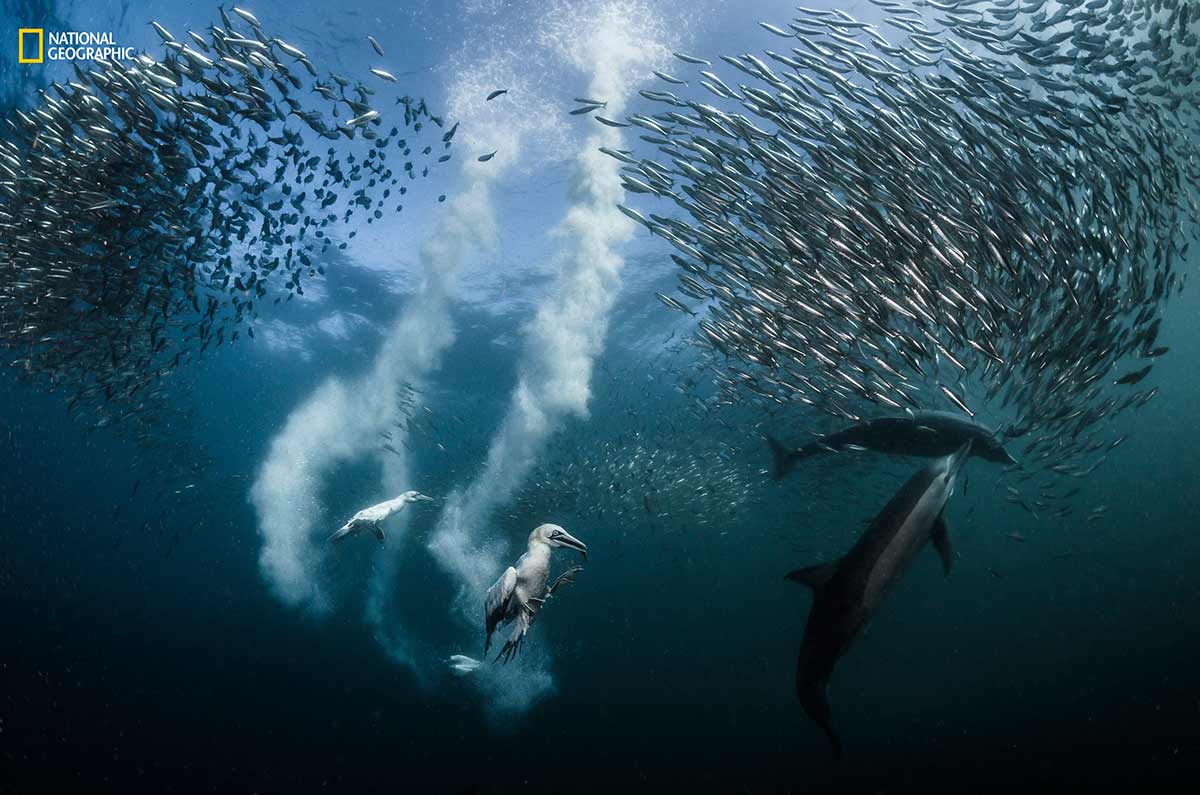
During the sardine migration along the Wild Coast of South Africa, millions of sardines are preyed upon by marine predators such as dolphins, marine birds, sharks, whales, penguins, sailfishes, and sea lions. The hunt begins with common dolphins that have developed special hunting techniques to create and drive bait balls to the surface. In recent years, probably due to overfishing and climate change, the annual sardine run has become more and more unpredictable. It took me two weeks to have the opportunity to witness and capture this marine predation. Photograph: Greg Lecoeur/2016 National Geographic Nature Photographer of the Year
SECOND PLACE WINNER - ACTION
APPROACH
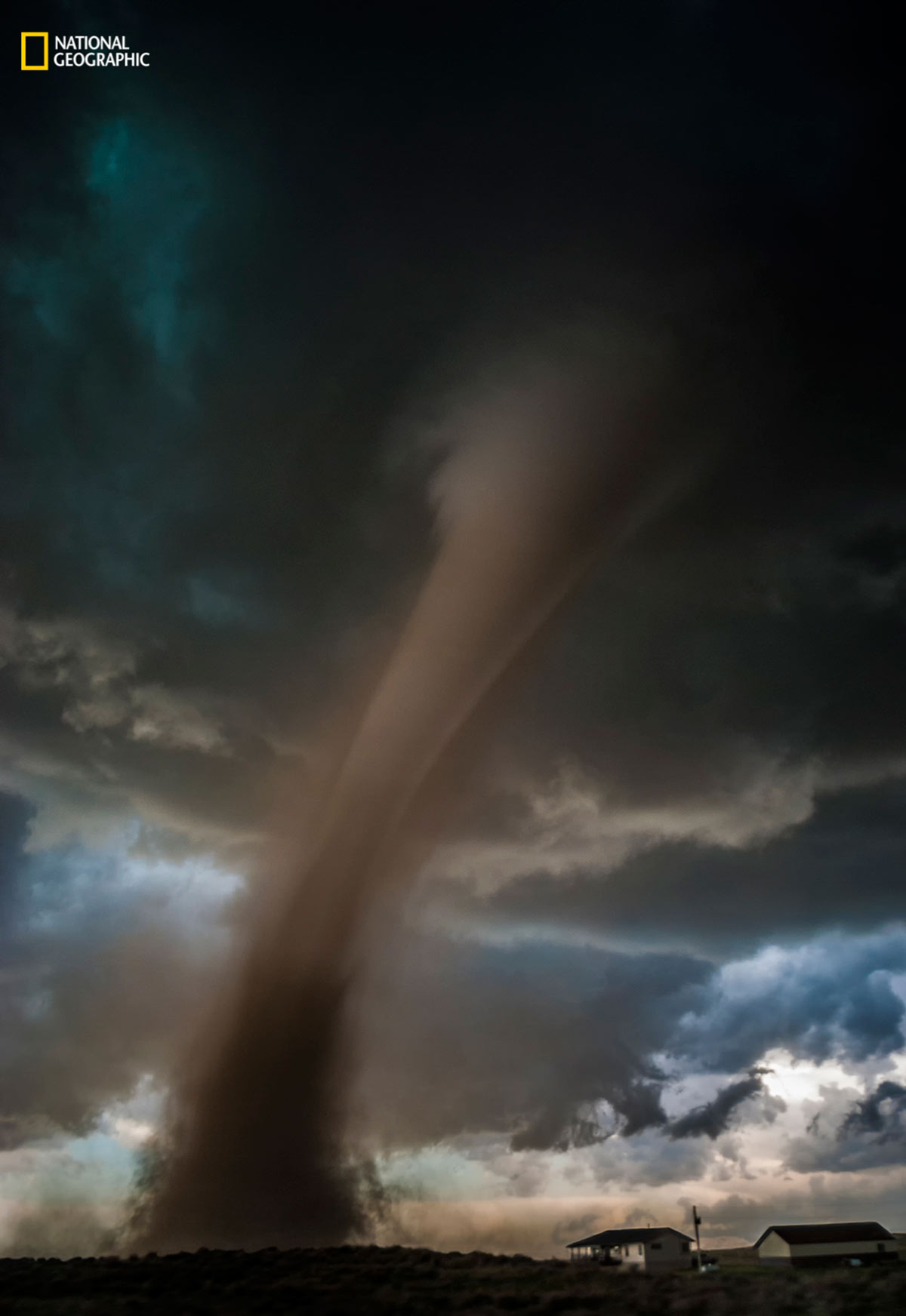
An EF2 tornado bears down on a home in Wray, Colorado, on May 7, 2016. As soon as we were safe, as the tornado roared off into the distance through a field before roping out, we scrambled up the hill to check on the residents. Thankfully, everyone was all right, and we were grateful for that. As I was checking in with a young woman coming out of the basement, we became very aware of a strong new circulation right above our heads. We needed to run for cover and did so before saying a proper goodbye. Photograph: Tori Shea-Ostberg /2016 National Geographic Nature Photographer of the Year
THIRD PLACE - ACTION
GREAT EGRETS TAKE FLIGHT
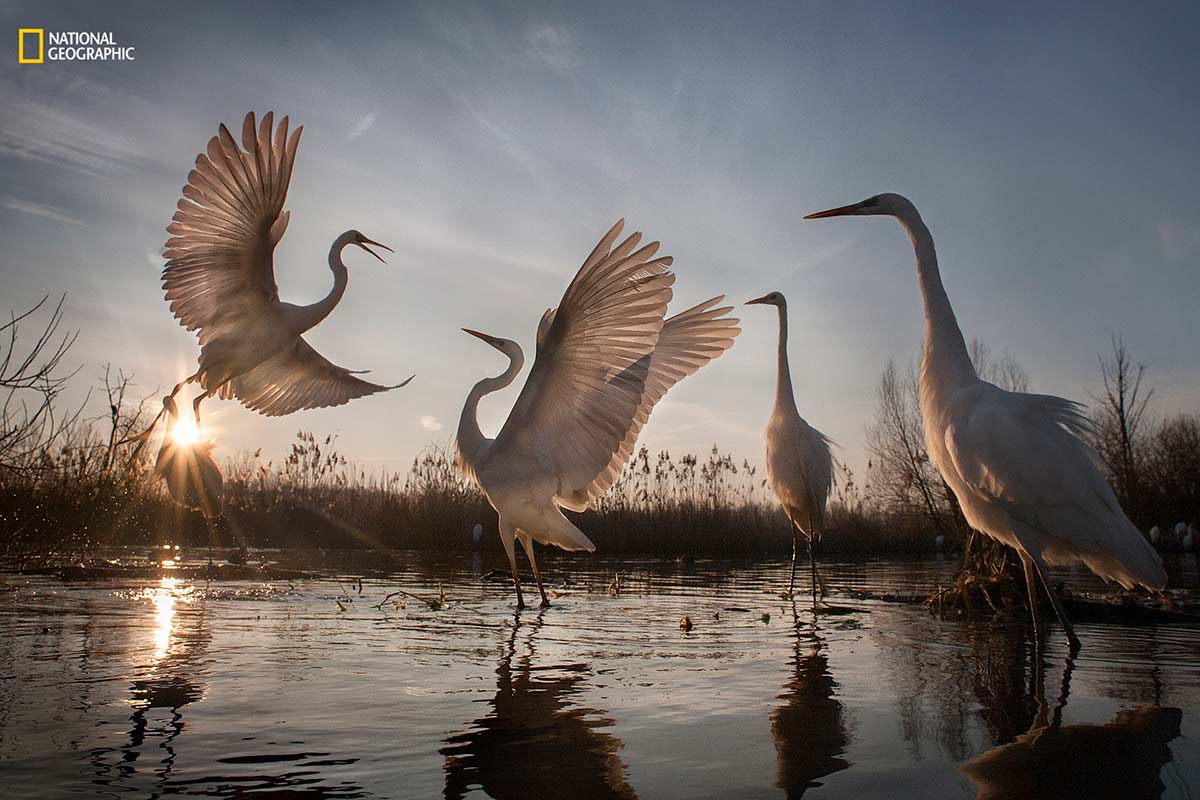
A remarkable conservation success story, the graceful great egret was saved from the brink of disappearance in Hungary, where in 1921 there were only 31 mating pairs remaining. Less than a century later, international conservation efforts have triumphed. We can now count over 3,000 mating pairs in Hungary alone. Today, although their numbers are continuing to climb, the great egret remains the Hungarian Nature Conservation’s symbol, and they are still considered an endangered species that must be carefully protected. The birds are most active at dawn and dusk, and here they’re squabbling over food and jostling for space in the crowded swamp. Photograph: Zsolt Kudich/2016 National Geographic Nature Photographer of the Year
HONOURABLE MENTION - ACTION
JELLYFISH FEAST
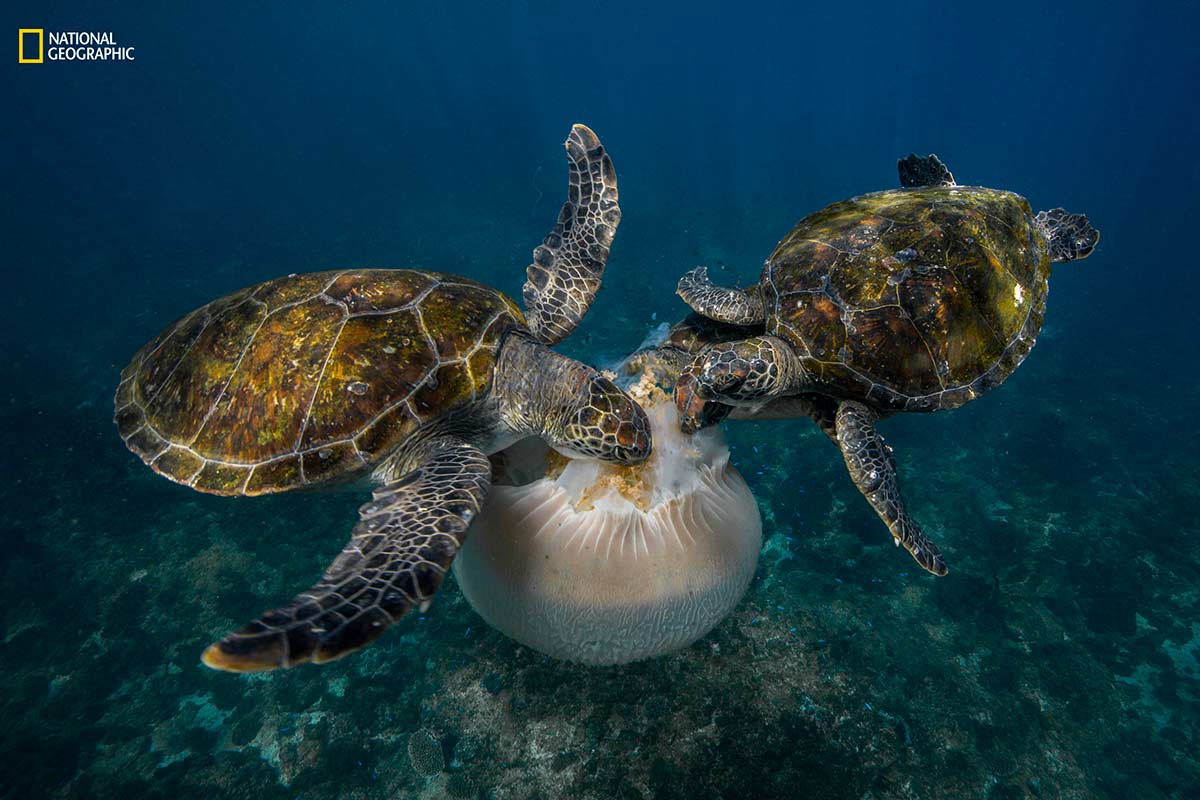
I came across this jellyfish on a dive in Byron Bay, Australia. At the time there was a single turtle eating various parts of the jellyfish. Soon, two more turtles arrived in full force and started a tug-of-war to keep the best bits of the jellyfish. I moved in closer to position myself in between the action as the turtles snapped at each other and continued to eat, oblivious to my presence. Soon there was little left of this giant jellyfish, and a small group of fish were evicted from their shelter within the stinging tentacles. Photograph: Scott Portelli/2016 National Geographic Nature Photographer of the Year
FIRST PLACE – ANIMAL PORTRAITS
DRAGGING YOU DEEP INTO THE WOODS!
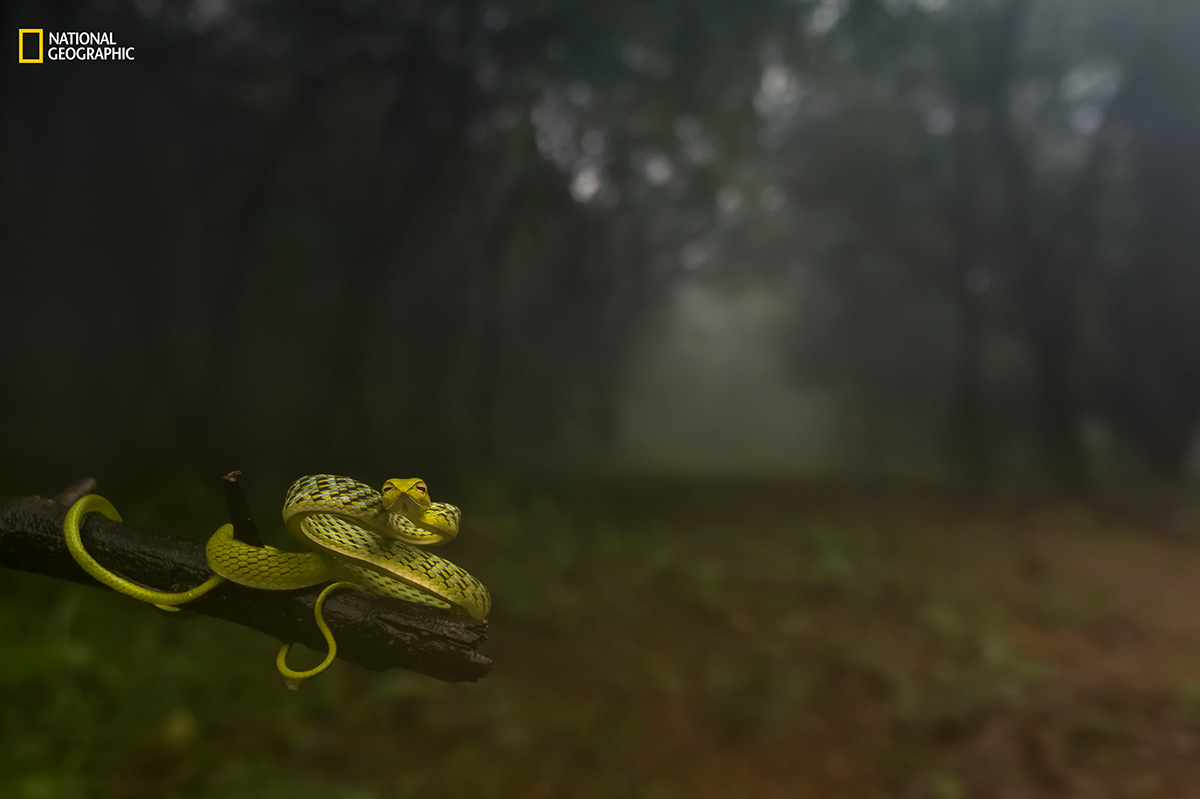
I shot this at Amboli, Maharashtra, India, on July 24, 2016, during a morning stroll into the blissful rain forest. Ceaseless drizzles dampened the woods for 10 hours a day; the serene gloom kept me guessing if it was night or day. The heavy fog, chilling breeze, and perennial silence could calm roaring sprits. And there I saw this beauty. I wondered if I needed more reasons to capture the habitat, for I was blessed to see this at the place I was at. I immediately switched from the macro to the wide-angle lens and composed this frame. Photograph: Varun Aditya/2016 National Geographic Nature Photographer of the Year
SECOND PLACE – ANIMAL PORTRAITS
PROUD MOMMA

A female peacock bass guards her brood in a Miami, Florida, freshwater lake. She will protect her young fry from a variety of predatory fish until they are large enough to fend for themselves. This tropical freshwater species, also known as the peacock cichlid, was introduced in Florida in the mid-1980s from South America to control the tilapia population, another invasive species. Throughout its native range (and in Florida) it’s a prized sportfish known for its fighting spirit. Photograph: Michael O’Neill/2016 National Geographic Nature Photographer of the Year
THIRD PLACE – ANIMAL PORTRAITS(a)
FRIENDSHIP KNOWS NO COLOUR

Two bodies of Empusa pennata in the same plant was the rare scene I found when I visited one of my favorite locations for macro shots. This area is located near a village called Las Rozas in Madrid, Spain. There’s a small stream about one kilometer long where you can find a varied ecosystem with many different types of insects and arachnids. From May to September, I had seen up to four different Empusas alone on their plants, but on this day I was extremely lucky when I found two individuals on the same plant. I took advantage of such a discovery and mounted my macro set and took several photos of this magical scene, where the Empusas seem to play or dance, sharing the same plant like good friends. Photograph: Jose Pesquero Gomez/2016 National Geographic Nature Photographer of the Year
THIRD PLACE - ANIMAL PORTRAITS (b)
PUFFIN STUDIO
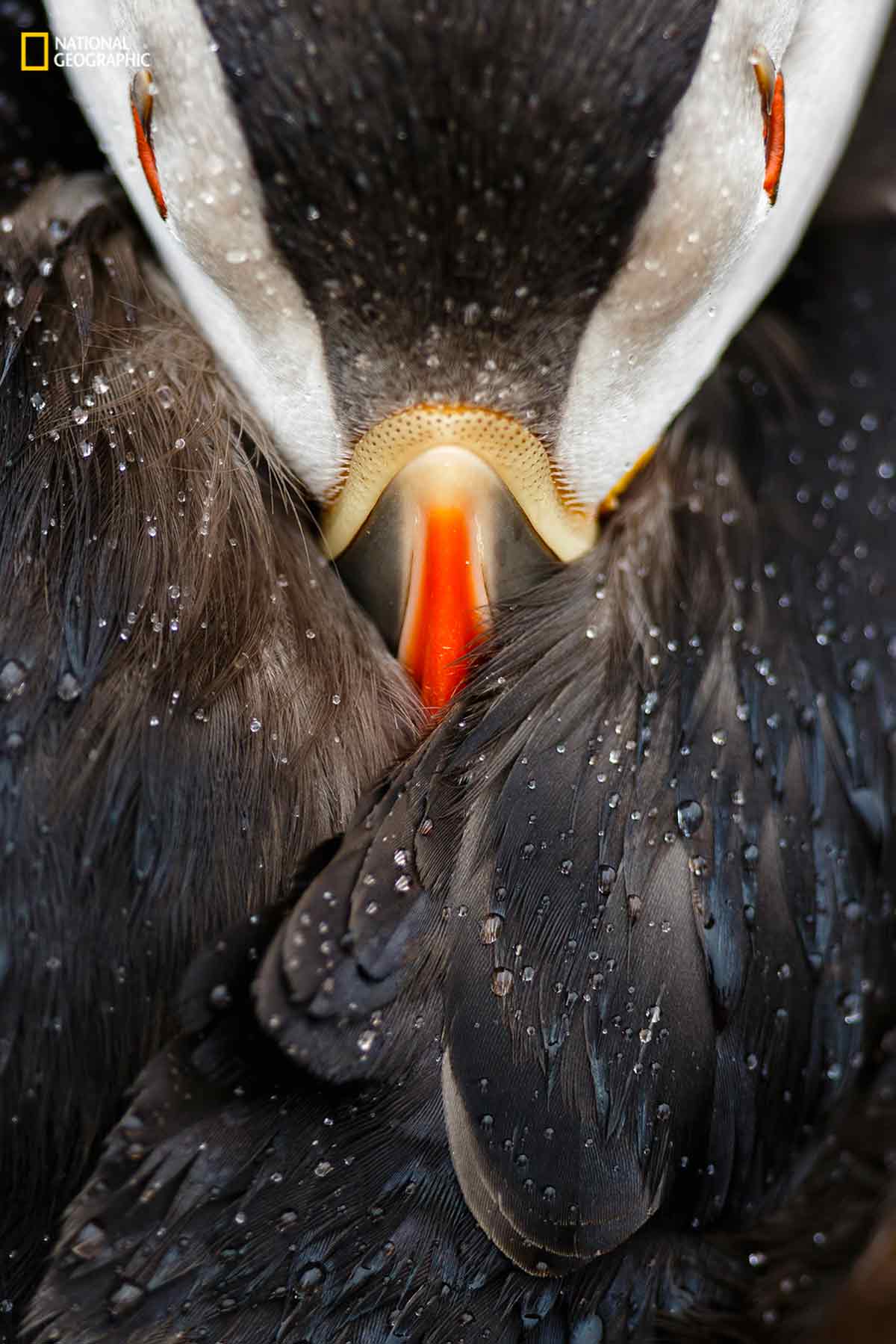
This image was taken during the summer of 2015 on SkomerIsland, Wales. This island is well known for its wildlife and the puffin colony is one of the largest in the United Kingdom. The photo shows a detail or study of an Atlantic puffin resting peacefully under the rain. As Skomer is not inhabited, puffins do not feel afraid of humans, and people can get really close to puffins. That morning, the conditions were perfect. Both fine rain and a soft light, so much appreciated by photographers, helped to take this picture. In order to get this angle from above the bird, I couldn’t make use of the tripod, as it could disturb the puffin. The photo had to be taken handheld, which added an extra challenge. Photograph: Mario Suarez Porras/2016 National Geographic Nature Photographer of the Year
HONORABLE MENTION – ANIMAL PORTRAITS
CROW CHASING PUFFY OWL
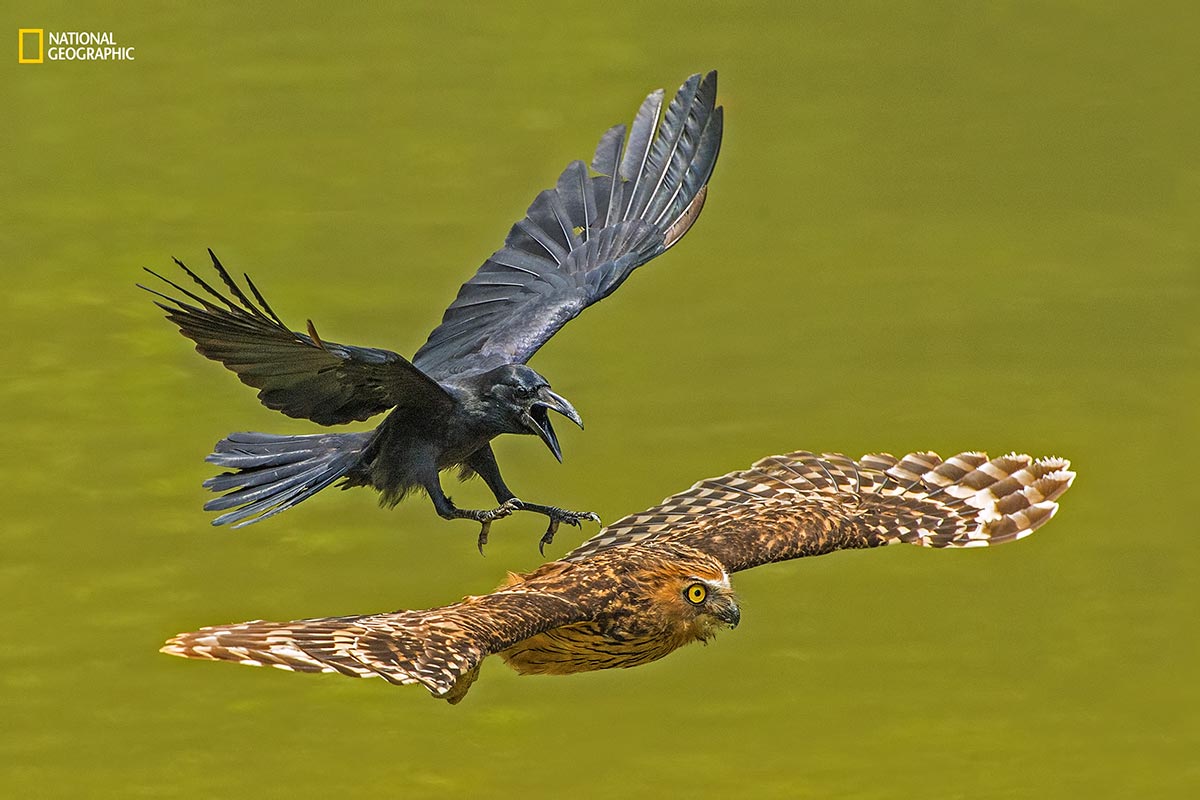
This shot was taken on an early September afternoon along the riverbank at PasirRisPark in east Singapore. I was hoping to capture wildlife in action when some movement in the bushes nearby caught my attention. Instinctively, I prepared my equipment to capture any action that might ensue. I was fortunate enough to witness this adult crow chasing an adult buffy fish owl right in front of me, proving at once that the crow was the more aggressive species of the two. The entire spectacle between these day and night creatures lasted less than two seconds and exemplified nature in its uninhibited form. Photograph: Lawrence Chia Boon Oo/2016 National Geographic Nature Photographer of the Year
FIRST PLACE - LANDSCAPE
STRUGGLE OF LIFE
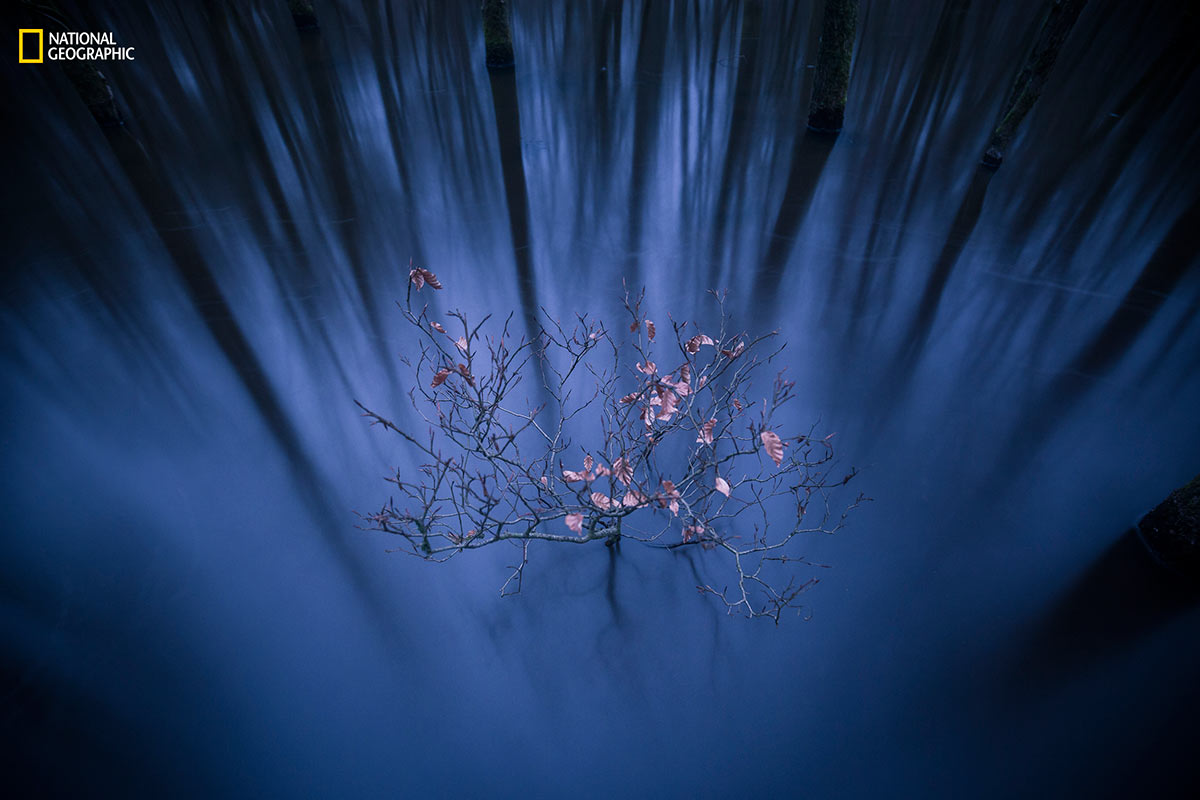
Last year I participated in the Marius van der Sandt Beurs. This scholarship stimulates photography by young photographers. For a whole year I was guided by some excellent nature photographers to realize a project I wanted to accomplish. I chose a natural stream restoration project of a nature organization in the Netherlands. The first time I entered this patch of forest, I immediately saw this little beech. I came back several times to photograph it. One evening, just after sunset, all the light conditions were perfect. I stood in the cold water for more than an hour making many photos while I experimented with different shutter speeds. Photograph: Jacob Kaptein/2016 National Geographic Nature Photographer of the Year
SECOND PLACE - LANDSCAPE
WILD RINK
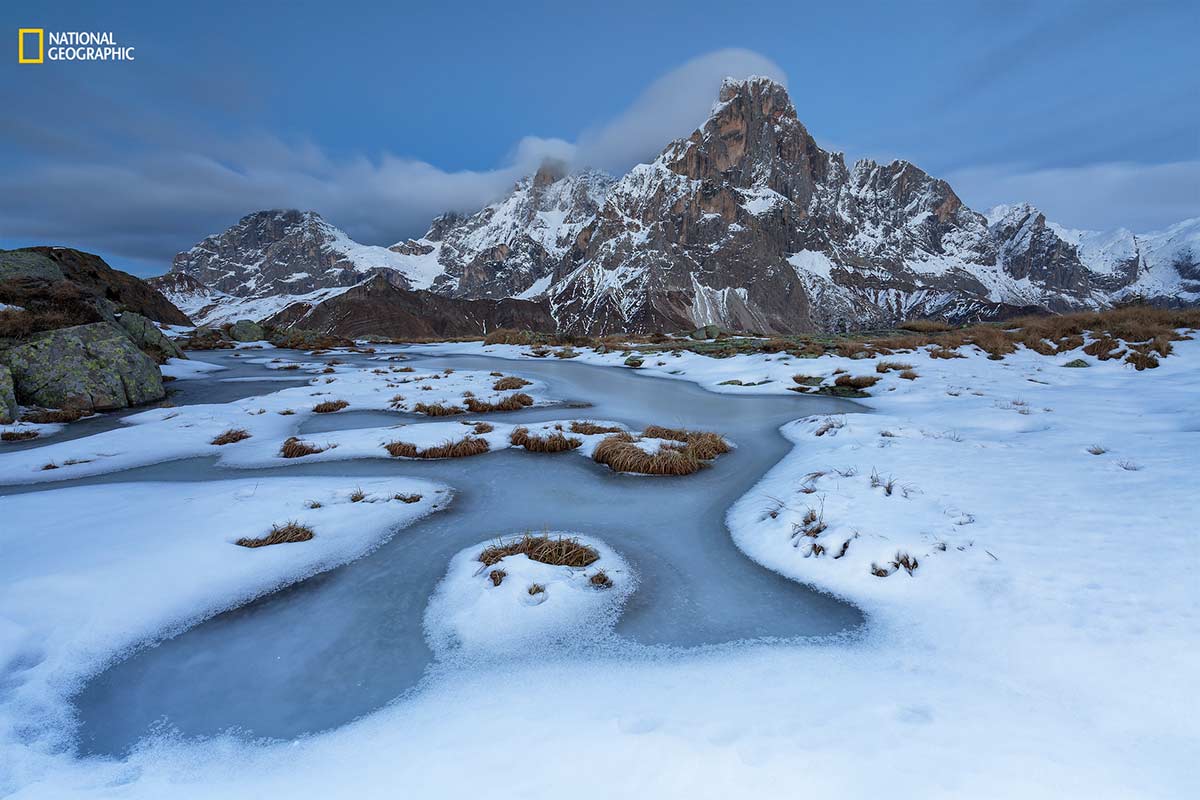
The first cold days of winter have frozen the surface of a pond, and the first snowfall has revealed its delicate beauty. In low-pressure conditions, southwest winds push the clouds against the vertical peaks of the Pale di San Martino. At dusk, a long shutter speed enhances the movement of the clouds around Cimon della Pala, one of the highest peaks in the Dolomites. Photograph: Alessandro Gruzza/2016 National Geographic Nature Photographer of the Year
THIRD PLACE – LANDSCAPE
PACIFIC STORM

An isolated cumulonimbus storm developed over the Pacific Ocean a few miles south of the coast of Panama City. It sat atop a temperature inversion that created a thick overcast layer of clouds. The strong updrafts of the storm quickly reached the tropopause and spread out, creating the characteristic anvil. The strongest updrafts pierced the tropopause and turned into what scientists call the overshooting tops. The entire frame was lit by a single lightning from within the storm in a moonless night on June 16, 2016. Photograph: Santiago Borja/2016 National Geographic Nature Photographer of the Year
HONORABLE MENTION – LANDSCAPE
SERENDIPITOUS GREEN METEOR

Anand Varma was visiting me and I was showing him around a mountain range in South India called the Western Ghats. We camped on the side of a road and I set up my Nikon D600 and a 24-70mm lens to take 15-second exposures. I set the camera to take 999 images. I slept next to the camera and it continued taking pictures until dawn. It wasn't until the next afternoon that I reviewed my images and noticed something unusually bright and green. I showed it to Anand, and we realized that I had captured an extremely rare event. After checking with a few experts, I learned that it was a green meteorite, and getting it on camera is very rare. This is an example of being at the right place at the right time to capture something totally unexpected. For those 15 seconds, I was the luckiest photographer on the planet. Photograph: Prasenjeet Yadav/2016 National Geographic Nature Photographer of the Year
FIRST PLACE - ENVIRONMENTAL ISSUES
LIFE AND DEATH
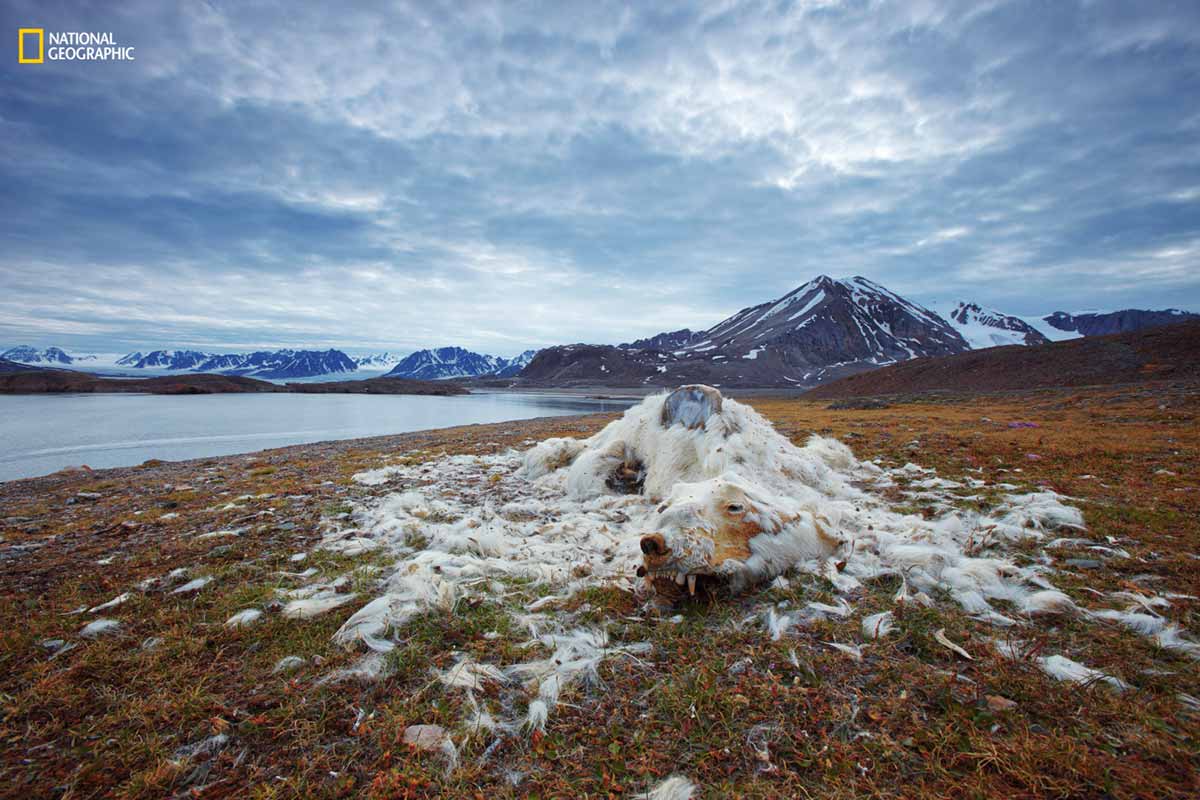
These polar bear remains have been discovered at one of the islands of northern Svalbard, Norway. We do not know whether the bear died from starving or aging, but more likely if we see the good teeth status, it was from starving. They say nowadays that such remains are found very often, as global warming and the ice situation influence the polar bear population. Photograph: Vadim Balakin/2016 National Geographic Nature Photographer of the Year
SECOND PLACE – ENVIRONMENTAL ISSUES
OUTSIDE FACEBOOK HQ
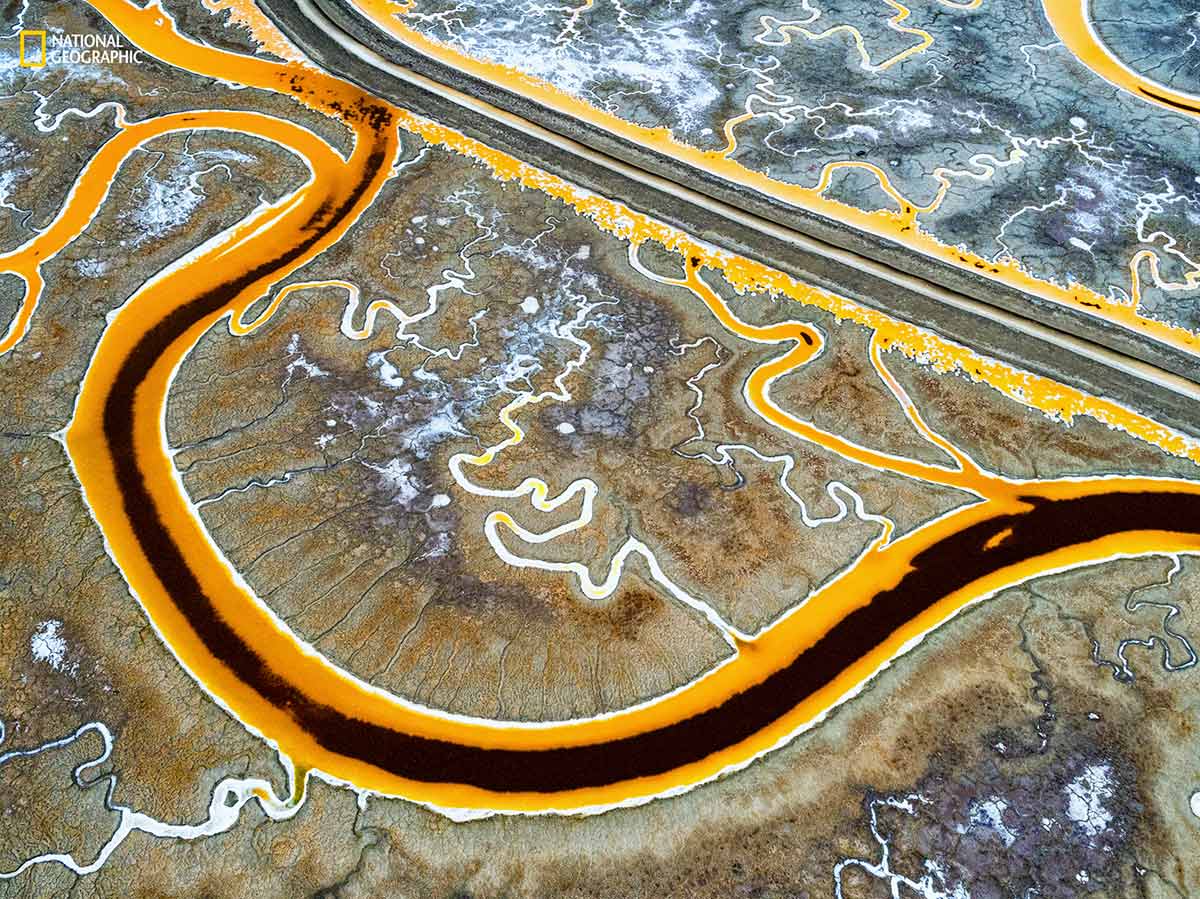
Eighty per cent of the San Francisco Bay Area wetlands — 16,500 acres — has been developed for salt mining. Water is channeled into these large ponds, leaves through evaporation, and the salt is then collected. The tint of each pond is an indication of its salinity. Microorganisms inside the pond change color according to the salinity of its environment. This high-salinity salt pond is located right next to Facebook headquarters, where about 4,000 people work every day. Photograph: Chris McCann/2016 National Geographic Nature Photographer of the Year
THIRD PLACE – ENVIRONMENTAL ISSUES
TOXIC VANITY
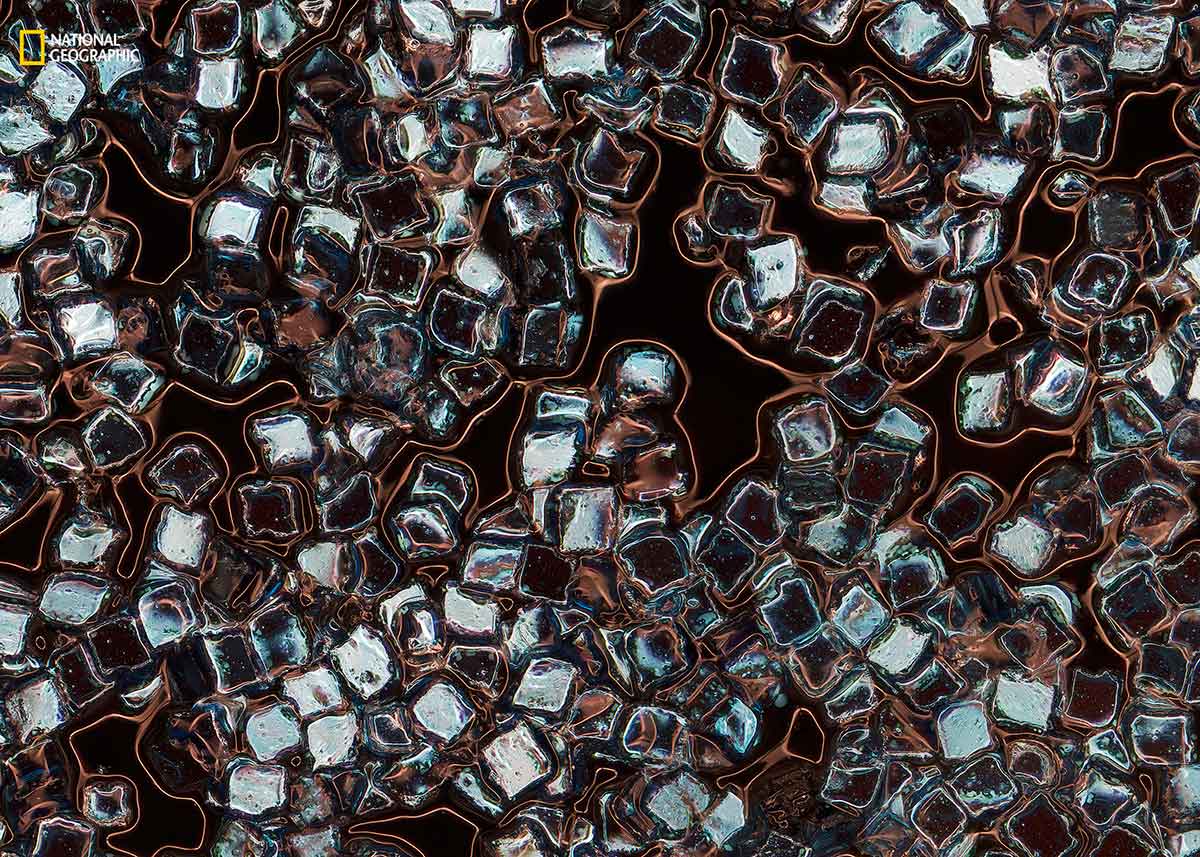
This image is a magnification of plastic particles in eyeliner, exploring just one facet of the synthetic swarm suspended in our oceans. The particles, lash-lengthening fibers, illuminating powders, and glitters these products contain are in fact tiny pieces of plastic. Every time we wash these products from our bodies or ingest them as we lick the glosses from our lips, we unknowingly add to the trillions of microplastic particles currently infesting every level of the ocean. This photograph was taken at FalmouthUniversity in Cornwall, United Kingdom, in May 2016 using a reflective photographic microscope with a stacking panoramic process to create the final image. Photograph: Eleanor Ryder/2016 National Geographic Nature Photographer of the Year
HONOURABLE MENTION 1 – ENVIRONMENTAL ISSUES
WILDFIRE AT THE BEACH
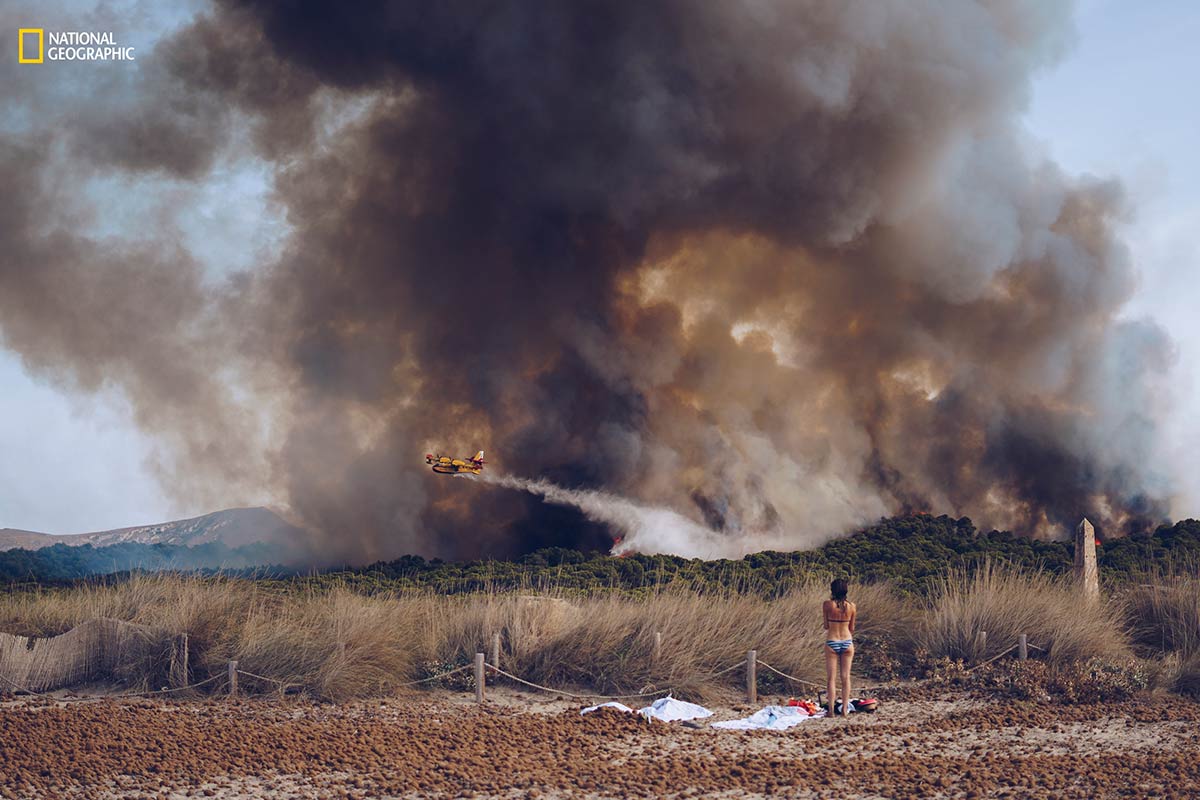
A young woman in a bikini looks at an approaching forest fire near the beach. A firefighting plane drops water to extinguish the wildfire. This image was taken at the beach of Son Serra, on the island of Mallorca, on August 18, 2016. Photograph: Sergej Chursyn/2016 National Geographic Nature Photographer of the Year
HONOURABLE MENTION 2 – ENVIRONMENTAL ISSUES
AMERICAN FLOWERS #1
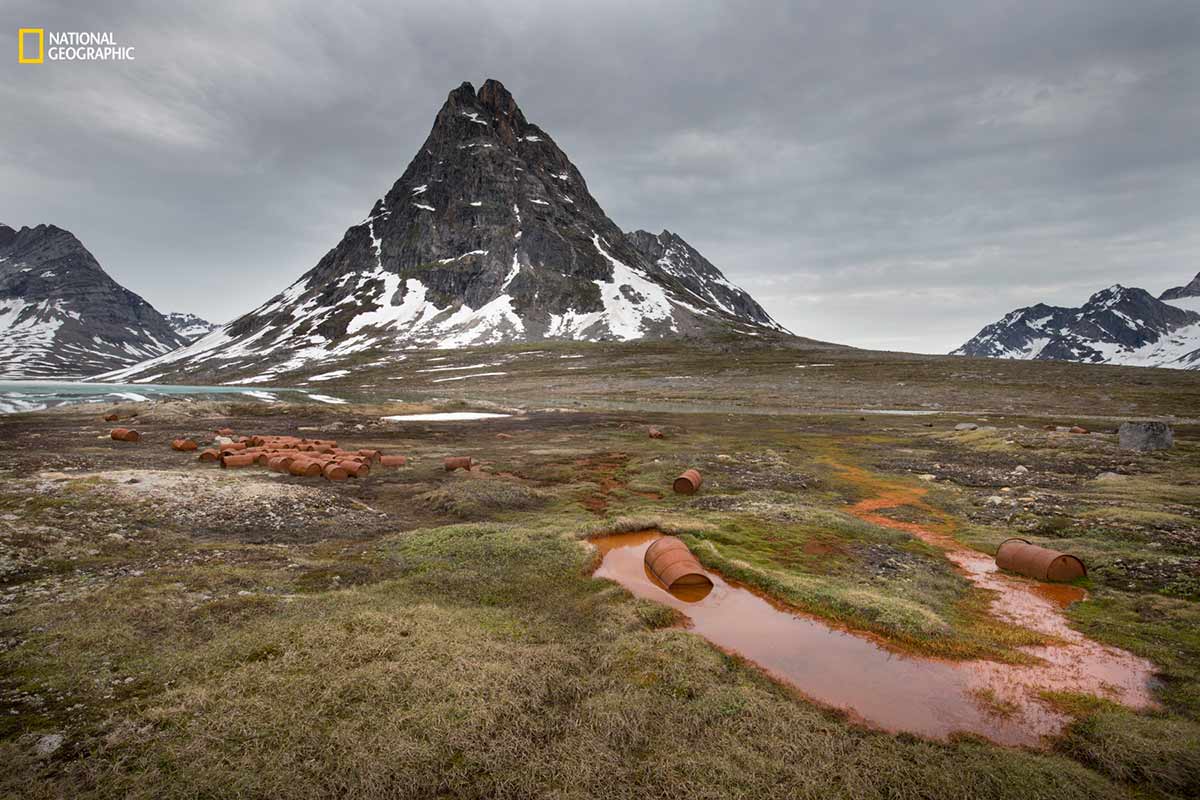
In East Greenland's landscape lies Bluie East Two, a remote U.S. Air Force base from World War II. The base was abandoned in 1947 and everything was left behind: military vehicles, structures, 800-plus cases of dynamite and munitions, and over 10,000 aviation fuel barrels. The Inuits who live in the region call these rusted remains American Flowers. I made it to the base in 2014, but I had to return to photograph it again in 2015. I wanted to get there early in the season when there would still be snow on the ground to provide contrast. Photograph: Ken Bower/2016 National Geographic Nature Photographer of the Year
HONOURABLE MENTION 3 – ENVIRONMENTAL ISSUES
NO SNOW, NO ICE?
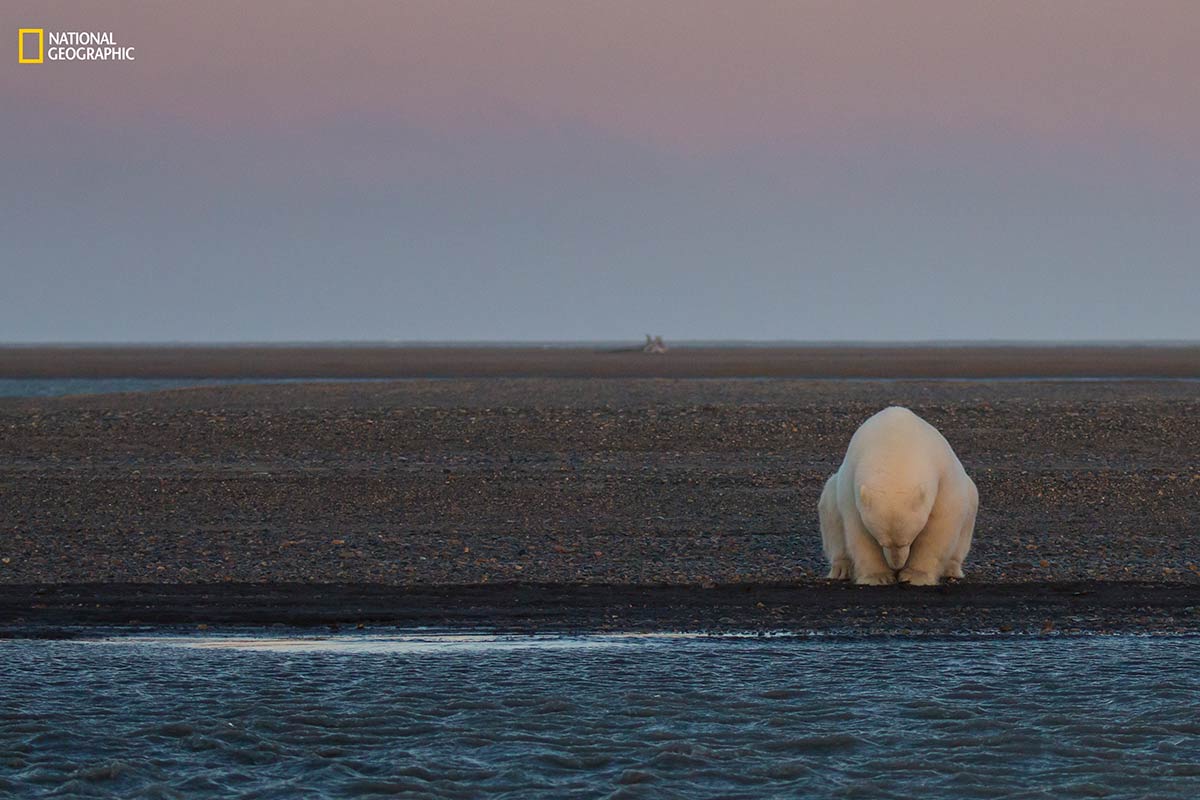
A solitary bear sits on the edge of Barter Island, Alaska. There is no snow when, at this time of year, there should be. The locals in Kaktovik noted that it's been an unseasonably warm winter, and that the ice will be late in forming this year. This will have an impact on the local polar bear population when it comes time to hunt seals for their food in the winter months. Photograph: Patty Waymire/2016 National Geographic Nature Photographer of the Year